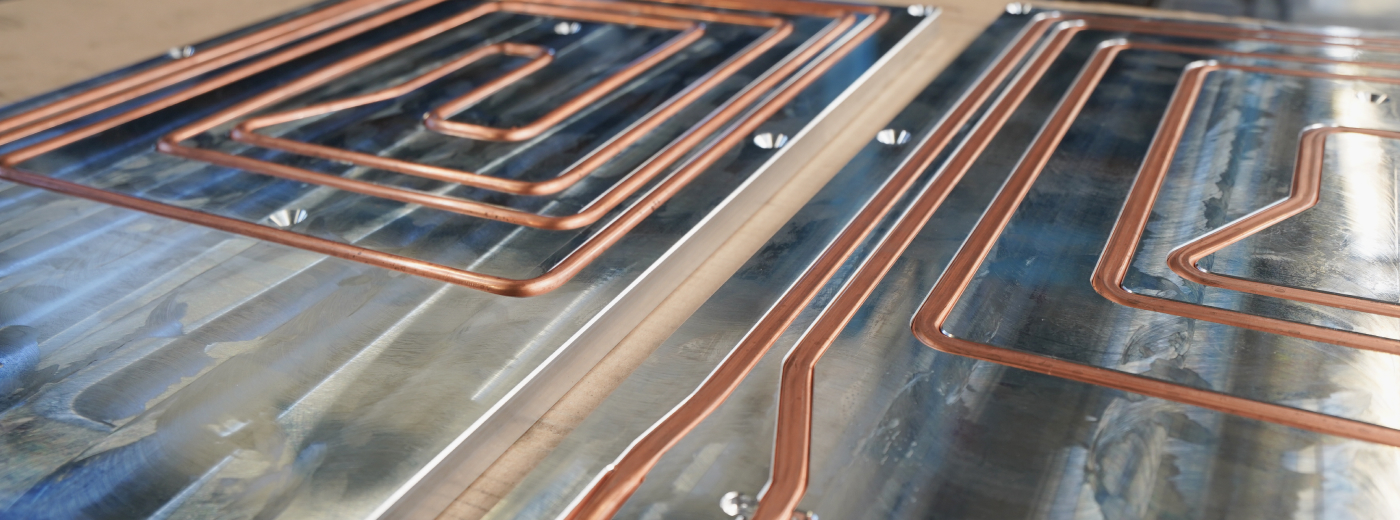
Pressing
Learn how modern pressing technologies enable highly efficient heat sinks for electronics and liquid cooling – precise, efficient, and application-optimized.

Stainless steel is used wherever heat sinks must withstand extreme environmental conditions. With its high corrosion resistance, mechanical strength, and longevity, stainless steel is the ideal material for cooling applications in aggressive or chemically demanding environments.
Learn more in a conversationStainless steel is the first choice for applications where reliability, resistance, and durability are key. Despite its lower thermal conductivity, it stands out with excellent corrosion resistance, high mechanical strength, and versatile usability – ideal for heat sinks and liquid coolers in extreme industrial environments.
Excellent Corrosion Resistance
Stainless steel forms a dense, passive chromium oxide layer that protects the material from moisture, chemicals, and aggressive substances. This makes it ideal for marine, chemical, pharmaceutical, and food industry applications.
High Mechanical Strength
Stainless steel offers high stability and resistance to mechanical and thermal stress. It is especially suitable for pressure systems and liquid cooling plates that must operate reliably over long periods.
Temperature and Chemical Resistance
Even under strong temperature fluctuations or in environments with corrosive fluids, stainless steel remains dimensionally stable and durable. These properties make it the preferred choice for demanding industrial processes.
Aesthetics & Surface Quality
In addition to its functionality, stainless steel offers an attractive appearance and smooth surface, making it preferred for design applications or visible components.

Typical alloys such as 1.4301 (AISI 304) or 1.4404 (AISI 316L) provide an excellent combination of corrosion resistance, strength, and processability.
They are ideal for heat sinks in marine facilities, chemical plants, or process cooling systems exposed to aggressive media.
To compensate for the lower thermal conductivity of stainless steel (approx. 15–30 W/mK), hybrid solutions are often used:
Stainless steel as the outer shell for sealing and stability
Copper or aluminum inserts inside for improved heat conduction – resulting in a durable, efficient, and corrosion-resistant cooling structure.
Stainless steel is ideal for liquid coolers operated with aggressive or abrasive coolants.
Thanks to its resistance to wear, erosion, and corrosion, it ensures stable operation even under high flow rates and continuous load.
Stainless steel offers excellent overall service life and requires minimal maintenance.
Despite higher material costs, its use pays off through:
reduced replacement needs
less downtime, and
greater operational safety
To further improve corrosion resistance and appearance, stainless steel components can be:
electropolished
passivated, or
coated.
Our experts provide individual advice on choosing between aluminum, copper, or stainless steel – for heat sinks that are efficient, robust, and precisely tailored to your needs.